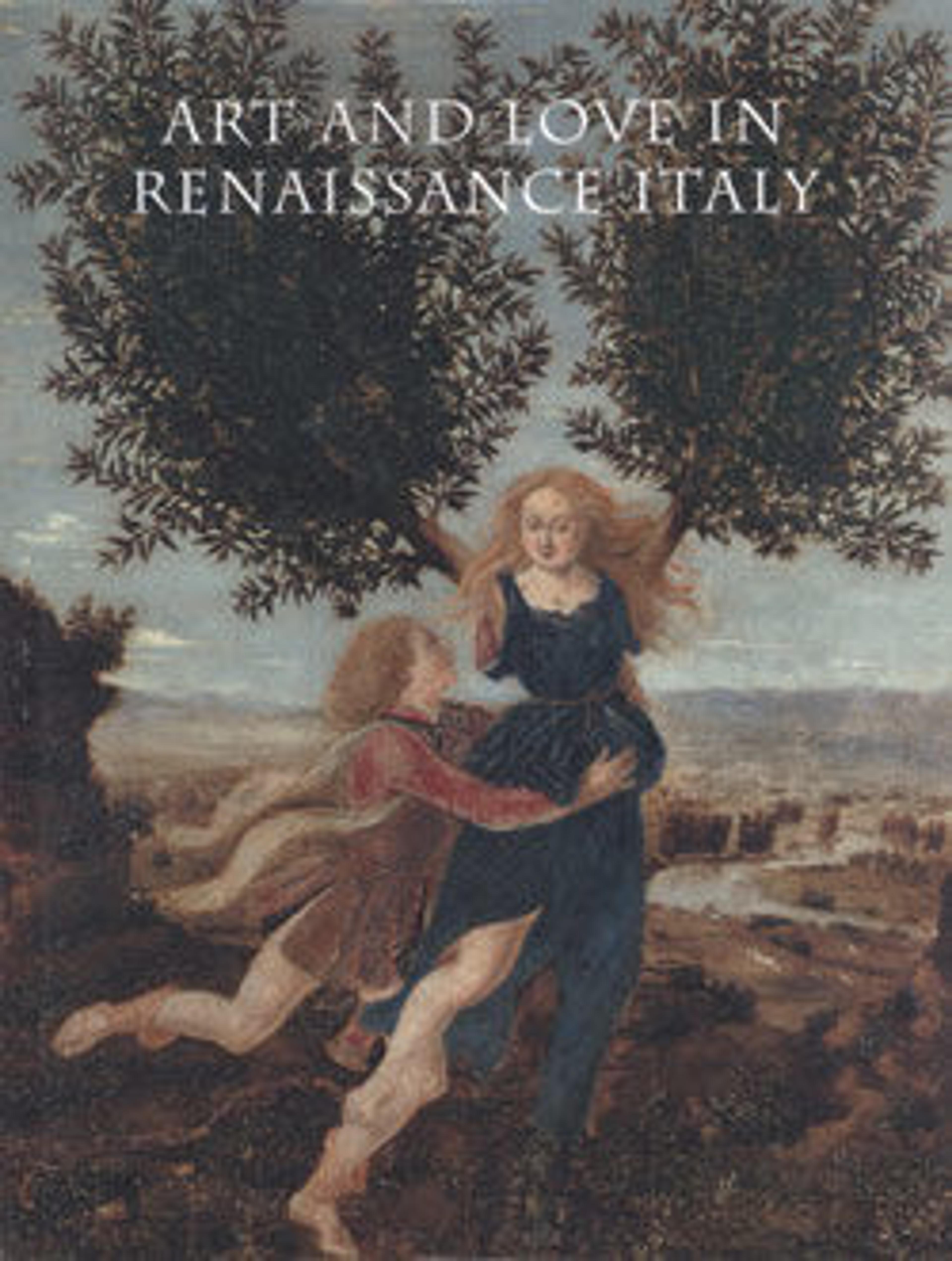Case (étui) with an amorous inscription
Etui in medieval inventories and expense accounts was a general term for storage or travel containers of various materials and sizes. One such inventory of the early fourteenth century itemizes a small étui de cuir bouilli, was purchased to hold a painting by Jehan d’Orléans, painter to King Charles VI of France. The term cuir bouilli, literally, "boiled leather," is used to describe a particular type of leather decoration. Soaked in a lukewarm solution of resin or wax to make it soft and flexible, the leather was molded into the desired shape. Decorative patterns were then tooled or impressed on the surface and often highlighted in color, gilding, or punching.
References are also made to small étui of cuir bouilli which were designed specifically to be attached to one’s costume. Used to carry quill pens, ink wells, books, cutlery, and other personal possessions, these objects are frequently depicted in fifteenth-century paintings and manuscript illuminations. This Italian example has two interior compartments designed to contain a knife and spoon, and is inscribed A BONA FEDE DE TEL BON ("in good faith of so good" [a heart]); the tooled heart that appears at the end of the inscription replaces the actual word.
References are also made to small étui of cuir bouilli which were designed specifically to be attached to one’s costume. Used to carry quill pens, ink wells, books, cutlery, and other personal possessions, these objects are frequently depicted in fifteenth-century paintings and manuscript illuminations. This Italian example has two interior compartments designed to contain a knife and spoon, and is inscribed A BONA FEDE DE TEL BON ("in good faith of so good" [a heart]); the tooled heart that appears at the end of the inscription replaces the actual word.
Artwork Details
- Title: Case (étui) with an amorous inscription
- Date: 1450–1500
- Geography: Made in Italy
- Culture: Italian
- Medium: Leather (Cuir bouilli), wood core, red cord
- Dimensions: Overall (case only): 8 1/4 x 3 1/8 x 3 1/4 in. (20.9 x 8 x 8.2 cm)
Overall (with strap extended): 15 9/16 x 3 1/8 x 3 1/4 in. (39.6 x 8 x 8.2 cm) - Classification: Leatherwork
- Credit Line: Rogers Fund, 1950
- Object Number: 50.53.1
- Curatorial Department: Medieval Art and The Cloisters
More Artwork
Research Resources
The Met provides unparalleled resources for research and welcomes an international community of students and scholars. The Met's Open Access API is where creators and researchers can connect to the The Met collection. Open Access data and public domain images are available for unrestricted commercial and noncommercial use without permission or fee.
To request images under copyright and other restrictions, please use this Image Request form.
Feedback
We continue to research and examine historical and cultural context for objects in The Met collection. If you have comments or questions about this object record, please contact us using the form below. The Museum looks forward to receiving your comments.
